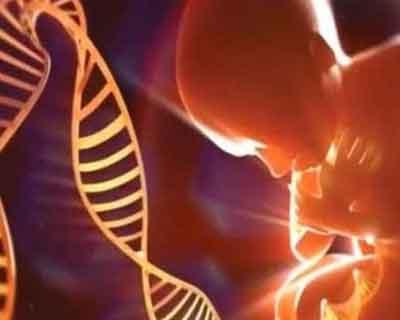- Home
- Editorial
- News
- Practice Guidelines
- Anesthesiology Guidelines
- Cancer Guidelines
- Cardiac Sciences Guidelines
- Critical Care Guidelines
- Dentistry Guidelines
- Dermatology Guidelines
- Diabetes and Endo Guidelines
- Diagnostics Guidelines
- ENT Guidelines
- Featured Practice Guidelines
- Gastroenterology Guidelines
- Geriatrics Guidelines
- Medicine Guidelines
- Nephrology Guidelines
- Neurosciences Guidelines
- Obs and Gynae Guidelines
- Ophthalmology Guidelines
- Orthopaedics Guidelines
- Paediatrics Guidelines
- Psychiatry Guidelines
- Pulmonology Guidelines
- Radiology Guidelines
- Surgery Guidelines
- Urology Guidelines
First heartbeats may occur 16 days after conception, says study

London : The human heart may start beating as early as 16 days after conception, a new study in mice suggests, a finding that may help understand and prevent heart conditions that arise as a foetus develops.
Researchers at the University of Oxford in the UK looked at the developing mouse heart and found that the muscle started to contract as soon as it formed the cardiac crescent an early stage in heart development.
In mice, this crescent forms 7.5 days after conception, which is equivalent to day 16 in the human embryo. Previously, it was thought that the heart started to contract a stage later, when the heart appears as a linear tube.
Congenital heart disease is diagnosed in at least one in 180 births, which equates to around 4,000 each year or 12 babies every day in the UK.
The researchers hope that by understanding more about how the heart forms in the womb, they will one day be able to prevent heart conditions that arise as a foetus develops.
By adding fluorescent markers to calcium molecules within the mouse embryo, the team was able to see at which point in time the calcium tells our heart muscle cells to contract and then become coordinated enough to produce a heartbeat.
The team also found that this initiation of beating was essential for the heart to develop properly at an early stage and that a protein called NCX1 plays a key role in the generation of the calcium signals needed to produce the beating action of the heart.
The heart is the first organ to form during pregnancy and is critical in providing oxygen and nutrients to the developing embryo.
The process of heart development is highly conserved between mammalian species, meaning that these findings may add considerably to our understanding of how the human heart develops.
"We are trying to better understand how the heart develops, and ultimately what causes the heart defects that develop in the womb before birth and to extrapolate to adult heart repair," said Paul Riley, who led the research at the University of Oxford.
"By finding out how the heart first starts to beat and how problems can arise in heart development, we are one step closer to being able to prevent heart conditions from arising during pregnancy," Riley said.
Researchers hope that the findings will bring them closer to being able to repair damaged muscle after a heart attack.
One of the main difficulties with repairing the heart is that the new cells need to connect and synchronise their beating with the existing tissue.
Just like making origami, without having the right set of instructions it becomes much more difficult to make a heart, or even parts of the heart, with the right form and function.
By finding out how and when the heart first starts to beat, the team has uncovered some of the 'instructions' that may help them transform stem cells into fully functional cardiac cells in the lab.
The study was published in the journal eLife.

Disclaimer: This site is primarily intended for healthcare professionals. Any content/information on this website does not replace the advice of medical and/or health professionals and should not be construed as medical/diagnostic advice/endorsement or prescription. Use of this site is subject to our terms of use, privacy policy, advertisement policy. © 2020 Minerva Medical Treatment Pvt Ltd